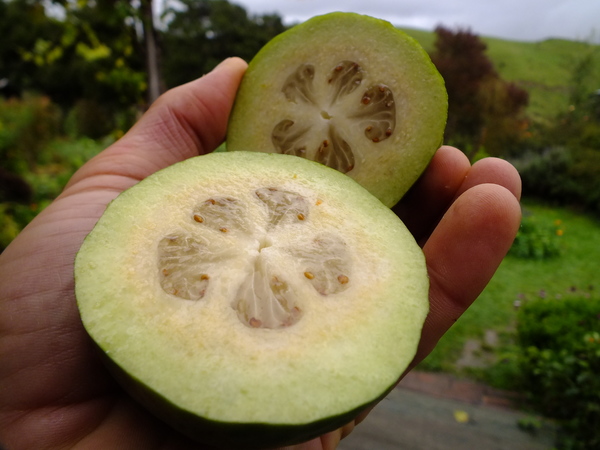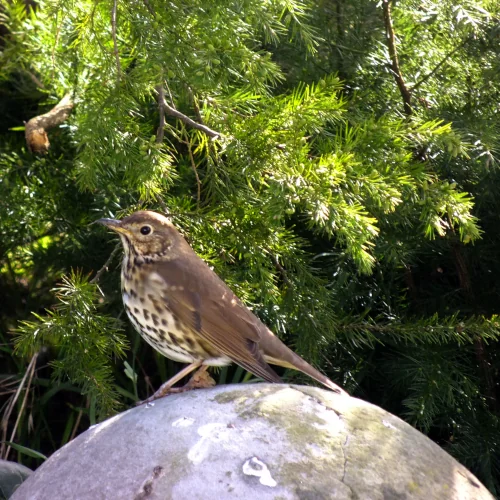Feijoa - Acca sellowiana
Propagation
Seed - sow spring in a greenhouse. Rinse the seed before sowing to ensure there is no fruit flesh remaining since this can inhibit germination. The seed usually germinates in 3 - 6 weeks at 15°c. Prick out the seedlings into individual pots as soon as they are large enough to handle. Grow on for at least the first winter in a greenhouse and plant out in late spring or early summer after the last expected frosts. Give the plants some protection for their first winter outdoors.
Cultivation
Prefers a light loamy well-drained soil[2][4], requiring a warm sunny position[8]. Prefers light shade[9]. Succeeds in any reasonably good soil, even chalk[10][8]. Dislikes extreme alkalinity[9]. Tolerates drought and salt winds[4].
A very ornamental plant[10], it is only hardy in the milder areas of Britain. It grows very well on a west-facing wall at Kew where it often produces fruits, though these do not always ripen[K]. A very good crop of fruit was produced on this plant after the cool summer of 1998, these were not quite ripe at the end of October, but they ripened in storage[K]. Plants have also succeeded in Norfolk and in Scotland when grown against a sunny wall, though some extra protection might be required in very cold winters[11]. Succeeds as a free-standing shrub in Cornwall[10][12]. Tolerates temperatures down to between -12 and -15°c[13] when the plant is fully dormant[4]. Occasionally, and more frequently, being cultivated for its edible fruit in sub-tropical zones[1][14], there are some named varieties[3]. 'Apollo' and 'Mammoth' are cultivars noted for their fruiting propensity.
Pollination
Apart from ‘Unique’ which is reliably self fertile, all feijoa varieties are only at best partly self fertile. Cross pollination between two (or more) different varieties will ensure good fruit set and fruit quality. This is because good pollination produces many tiny seeds, which leads to larger and better shaped fruit and a greater proportion of pulp. Due to the long flowering season, any combination of varieties seems to provide sufficient cross pollination.
Pollination is generally undertaken by birds, which are attracted to the brightly coloured flowers. Blackbirds in the South Island and a combination of blackbirds and mynas in the North Island are the main pollinators. Trees should be pruned to allow the birds to freely fly around and through the bush, therefore an open centre shape is recommended. A dense habit will reduce flowering and pollination.
|
SOIL |
Feijoas can be grown in most soils but prefer well drained, fertile soils. |
|
PLANTING SITE |
Sunny position is best. |
|
CLIMATE |
Feijoas fruit best in warmer areas of the country. Early ripening varieties are best for colder areas. |
|
WATERING |
Water well during the early stages, during long dry periods and when the fruit is developing. |
|
PESTS & DISEASES |
Feijoas are affected by very few pests and diseases. |
|
PLANTING IDEAS |
Feijoas can be grown as specimen trees, in a row as a hedge and pruned as a standard. Compact growing varieties can be grown in containers. |
|
FRUIT |
Fruit ripens from late Summer into Autumn. The fruit is ready when it falls to the ground and when it can be easily pulled from the tree. |
|
POLLINATION |
Some varieties are self fertile (Unique), but will produce heavier and more regular crops if pollinated by one or more varieties. Plant at least two varieties to ensure cross pollination and good fruiting. |
|
TREE SIZE |
Height varies by variety, ranging from 2-4m. |


